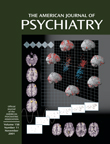Litigation in recent decades has been a growth industry, so to speak, and forensic neuropsychology has grown along with it. The development of neuropsychology over the past 30 years as a subspecialty of psychology owes a great deal to its participation in legal proceedings in evaluating cognitive processes. Some say that lawyers more than hospitals or psychiatrists use the services of neuropsychologists, but the empirical data on it are limited
(1). At Henry Ford Hospital, the major medical center in Detroit, approximately 25% of referrals for neurological testing come from medical clinics, 25% from neurology, 20% from psychiatrists, and 30% from lawyers and others (personal communication from K. Potel, head of neurological services at Henry Ford Hospital, Oct. 16, 2000). Since many of the cases end up in litigation, medical people ask for a neurological evaluation for that purpose. Attorneys avoid paying for the evaluation when the referral comes from medical services.
Neurologists serve as expert witnesses in a variety of civil and criminal cases but mainly in personal injury cases dealing with alleged brain injury. The more than 200,000 annual automobile accidents in the United States generate much of the litigation involving head injury. For lawyers, the test-based nature (rather than interviews) of neuropsychology testing is appealing. The neuropsychological evaluation is a psychometric investigation of the behavioral manifestation of brain dysfunction. The testing is so sensitive that it always finds brain damage, much to the delight of plaintiff lawyers or defense counsel in criminal cases. By and large, proclaiming the “objectivity” of their testing, neuropsychologists have been more effective than psychiatrists in marketing their services in the legal area.
This book provides up-to-date coverage of issues with which the clinical neuropsychologist must deal in the forensic setting. It is edited by Jerry Sweet, director of the Neuropsychology Service at Evanston Hospital and associate director of clinical training in the psychology department of Northwestern University. There are 15 chapters by 20 neuropsychologists, all of them highly regarded, and two legal experts. The text is organized into four sections: Fundamentals, Practice Expertise, Relevant Populations, and Parameters of the Forensic Arena.
Sweet writes,
There is little question that the strong scientist-practitioner foundations of clinical neuropsychology have provided essential empirical support for the development of the field, and, in particular, the development of clinical procedures that attract the attention of adversarial parties in need of relevant objective findings. (p. 469)
He notes that the decision of the U.S. Supreme Court in 1993 in
Daubert v. Merrill-Dow Pharmaceuticals (2) has established a new threshold for admission of information from experts. He adds, “No other healthcare field is better able, because of the strong connection between science and practice, to meet the consensual professional demands of the
Daubert decision than clinical neuropsychology” (p. 469).
Actually, neuropsychology may have no advantage in this regard in the courtroom. The
Daubert decision has been found to have little or no applicability to the “soft sciences” (psychiatry and psychology), but it may work to the disadvantage of neuropsychology, as David Hartman of Rush University points out (p. 339).
Daubert tightens the standard for “scientific testimony,” that is, the “hard sciences,” which may include neurology, given its reliance on quantitative measurements
(3). The law puts fields of knowledge in one camp or the other (hard versus soft science) rather than on a continuum.
Lawsuits require evidence regarding the cause, nature, and extent of any alleged injury. The questions are, What was the condition of the plaintiff prior to the wrongful act of the defendant? and What was the condition of the plaintiff afterward? Without adequate records of the plaintiff before the injury, it is difficult to make a judgment of the plaintiff’s deficits antedating the injury. Then, too, how is the cause of the injury assessed? A combination of factors, only one of which is brain functioning, determines an individual’s level of neuropsychological functioning.
In a statement in 1996, the Therapeutics and Technology Assessment Subcommittee of the American Academy of Neurology
(4) warned,
Neuropsychological information is subject to intensive scrutiny in forensic proceedings and can be successfully challenged if it is over interpreted, obtained during the acute phase of an injury or when the patient is taking medications that might affect performance, ignores the presence of depression or anxiety when the tests were performed, or fails to take premorbid characteristics, developmental irregularities, and substance abuse into account.
Over the years the courts have split over the question whether a neuropsychologist may give testimony on the issue of causation of brain injury. The majority of the states that have ruled on the issue have permitted such testimony, but others have ruled against admissibility of the testimony as falling “wholly in the realm of conjecture, speculation, and surmise.” A few courts have allowed it when presented in conjunction with medical testimony, and still others have said that the testimony is superfluous when “the disability followed the accident in an obvious sequence.” A few years ago, the Iowa Supreme Court set out a review of decisions allowing or disallowing the testimony
(5).
Notwithstanding quantitative testimony, neuropsychological reports submitted in litigation have presented conflicting views not only on cause of an injury but also on the nature and extent of the injury. The reports of neuropsychologists are dense, resembling those of radiologists; the details often result in an obfuscation of the truth
(6). The various contributors in this book, as do other experts, attribute the conflicts in testimony to the pressures exerted in the adversarial setting. As is well-known, lawyers vary in how blatantly they communicate what they would like their expert to find.
Not only neurologists but also psychiatrists will find the suggestions presented in this book helpful in preparing for the courtroom. Attorneys will also find the book helpful in understanding the practices, scope, and limitations of neuropsychologists.

